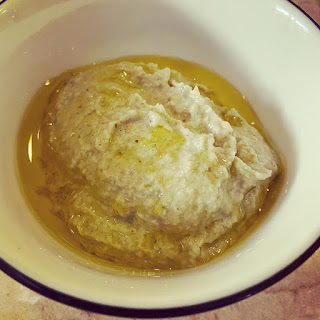Cheat's Victoria Sponge
You wouldn't think it would be necesary to have a cheat's version of a Victoria sponge. After all, it's such a simple cake to make ... or is it? Everyone loves a good Vicky sponge - the simple buttery moistness, light crumb and vanilla scent preparing the way for a big hit of raspberry jam.
And on the face of it, a VS should be straightforward, with predictably good results: equal quantities of butter, sugar and flour, eggs and vanilla and you're there ... right? Wrong, it seems. Because when I do baking classes, and I ask relatively confident cake makers what they most fear, they tell me it's the VS. The mixture curdles; it won't rise or it sinks in the middle; the crust separates and cracks; it's as tough and chewy as an old brick.
One of my pupils astonished me by actually managing to turn out two flat pancakes when the rest of us - working with the same ingredients, measurements, tins and ovens - had done uniformly well. "You see," she yelped. "I just can't make a Victoria sponge!" Trying to help, I suggested she could always make two more and serve it as a multiple-layered confection. "In my household that's called a disaster," she sighed, clearly having tried that one already.
Some of these complaints are common to all cake making but when you start out making a straightforward VS the disappointment is amplified. You can easily explain away a failed attempt at a sophisticated genoise or a Swiss roll; for a start the method seems so much more complicated and the timing and consistency more crucial but VS's are the cakes our mothers and grandmothers have been making for generations, churning them out for afternoon teas or a church fete without a second thought.
So where did we go wrong, and can we get the knack back?Or should we just move on from the classic Victoria Sponge that requires eggs of a certain size and butter at room temperature, to an easier, failsafe recipe that removes all the doubt and fear from the process? I think so.
This recipe comes - as so many do - from a primary school fundraising effort in my hometown of Port Elizabeth, South Africa, circa 1980. As such it will have been tried and tested and tried again many times and put forward for the book with great family pride. Each member of my family has a copy of this book and turn to it again and again for comfort baking.
Ingredients
30g unsalted butter
200ml milk
2 cups self-raising flour
2 cups sugar
Generous pinch of salt
4 large free-range eggs
1 tspn vanilla extract
Method
Grease and flour two 23cm cake tins and preheat the oven to 180C/ gas mark 4.
Put the milk and butter in a jug and microwave for 1.5 minutes, until just simmering.
Using an electric mixer, beat the eggs and sugar together in a bowl until light, creamy and frothy, then add the vanilla. Turn down the speed to minimum anbd slowly add the flour and salt to the egg and sugar mixture, about two tablespoons at a time. Alternate adding the flour with tablespoons of the hot milk mixture, until just combined.
Divide the batter between the two cake tins and bake on the middle shelf of the oven for 30 to 40 minutes until it is brown and firm to the touch. A toothpick inserted into the middle will come out clean if it is cooked. If not, turn off the oven and leave the cakes in it for another 10 minutes.
You can sandwich the cakes together with raspberry jam and fresh cream or, if you prefer, a buttercream filling:
125g unsalted butter
A few tablespoons of hot water
Half a teaspoon extract of pure vanilla
250g icing sugar
In a bowl, beat the butter until it’s the consistency of mashed potato, then gradually add the icing sugar, tablespoon at a time, adding a few drops of hot water to soften the mixture when it gets too tight. Add the vanilla essence and keep adding icing sugar until you have a spreading consistency.
Variations: Make an orange sponge cake by add the zest of an orange and substitute half the milk for fresh orange juice. For the icing, use orange juice instead of hot water.
Use lemon zest and juice for a lemon version, sandwich together with lemon curd and dust with icing sugar.
For a chocolate sponge, substitute half a cup of the flour for two heaped tablespoons of cocoa powder (not hot chocolate), and add two tablespoons of cocoa to the buttercream icing.
Fruit version: Grate four dessert apples or pears (excluding the core and pips), add a teaspoon of ground cinnamon and a teaspoon of mixed spice to the flour, and fold the apple in to the mixture as the last step before baking. The mixture will be wetter and may take an extra 5-10 minutes to cook.




Comments
Post a Comment